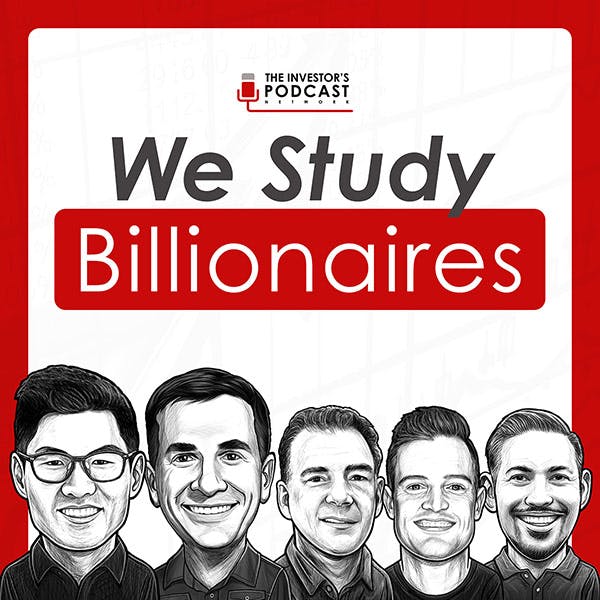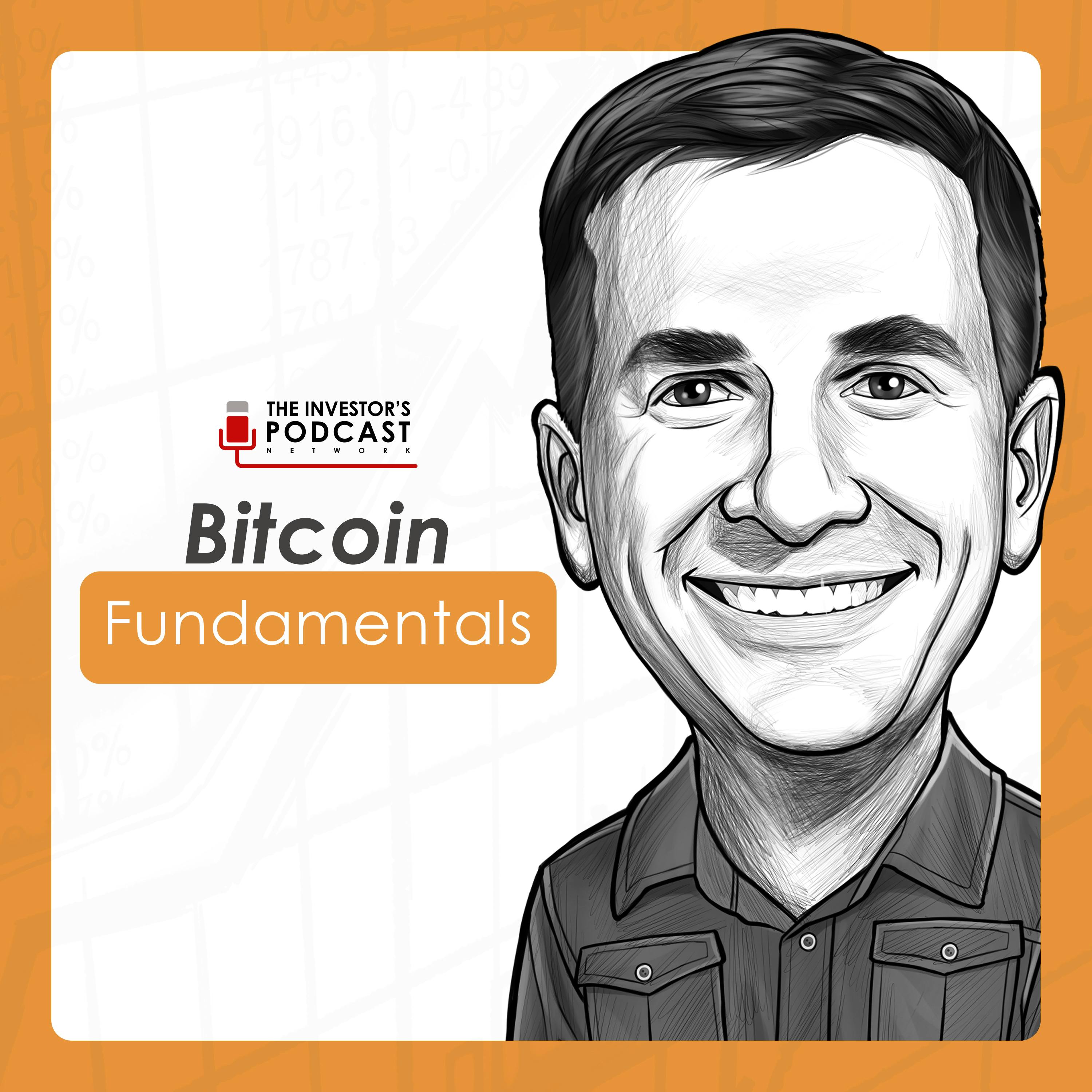
September 29, 2024 • 1hr 2min
TIP664: The Nomad Investment Partnership Way: Quality In Business and Beyond w/ Kyle Grieve
We Study Billionaires - The Investor’s Podcast Network

Key Takeaways
- The Nomad Investment Partnership generated exceptional returns of 20.8% compounded annually from 2001-2013, turning $1 into $10.21 before fees
- Nomad focused on high-quality businesses with scale economies shared business models, like Costco and Amazon
- They emphasized patience, long-term thinking, and inactivity as key elements of their investing approach
- Nomad used a "cone of uncertainty" concept to assess risk and conviction in investments
- They concentrated their portfolio in their highest conviction ideas with the most certain outcomes
- Nomad structured their partnership to align incentives with investors and minimize fees
- They fought against commitment bias and remained open to changing their minds on investments
- Destination analysis was used to evaluate the long-term prospects and trajectory of businesses
Introduction
In this episode, Kyle Grieve discusses the investing philosophy and concepts from the Nomad Investment Partnership, run by Nick Sleep and Qais Zakaria from 2001-2013. The partnership generated exceptional returns of 20.8% compounded annually, significantly outperforming the broader market.
Kyle explores how Nomad created their fund structure to align themselves with partners, why they settled on inactivity as a key strategy, the powerful effects of businesses that share profits with customers, how they ended up focusing on the scale economies shared business model, how they dealt with commitment bias, and other key insights from their approach.
Topics Discussed
Nomad's Ground Rules and Partnership Structure (4:17)
- Nomad focused on long-term investing in modestly valued firms run by management making decisions that may take years to bear fruit
- They emphasized that near-term results may be volatile but long-term results should be satisfactory
- Nomad's edge would come from capital allocation skills and patient investors
- They structured the partnership to align incentives with investors:
- Charged minimal management fee to cover costs
- Took performance fee only above 6% hurdle rate
- Set aside fees that could be refunded if performance lagged
- The goal was to generate large absolute returns, not beat an index
Nomad's Investment Criteria (5:37)
- Initially looked for businesses:
- Valued at 50% of intrinsic value
- Run by owner-oriented management
- Employing long-term capital allocation strategy
- Later added focus on scale economies shared business model
- Sought businesses priced at 50% discount to grow intrinsic value 10% annually
- This could potentially generate 26% CAGR over 5 years if price aligned with value
Inactivity and Quality Businesses (9:13)
- Inactivity became a key strategy but only works with high-quality businesses
- Reasons for drifting towards inactivity:
- Easier to have deep knowledge of fewer stocks
- Outstanding company cultures more powerful than realized
- Reduced reinvestment risk
- Many great businesses were on sale (especially in 2008-2009)
- Focused on businesses that were founder-led, had great cultures, and focused on cost savings
Scale Economies Shared Business Model (15:26)
- Nomad focused on businesses that shared scale benefits with customers
- As firms grow, scale savings are given back to customers via lower prices
- This creates a flywheel: lower prices drive more revenue, enabling more scale savings
- Examples: Costco, Amazon, Berkshire Hathaway
- Used "robustness ratio" to measure customer savings vs shareholder earnings
Cone of Uncertainty and Position Sizing (20:29)
- Used "cone of uncertainty" concept to assess risk and conviction
- As understanding of a business increased, cone of uncertainty narrowed
- This allowed for larger position sizes in highest conviction ideas
- Concentrated portfolio in businesses with highest certainty of success
- Averaged around 10 positions, with top holdings making up large portion of portfolio
Deep Understanding and Outsized Positions (29:12)
- Deep understanding of a business earlier than the market allows for outsized positions
- Example: Allowing Amazon position to grow as they understood the business better than most
- Requires significant work and time to reach this level of understanding
- Allows conviction to hold through periods of apparent overvaluation
Adding to Existing Holdings (31:46)
- Nomad preferred adding to existing holdings over new positions
- Reasoning:
- Existing holdings often had long growth runways
- Deep understanding of businesses already owned
- Reduced reinvestment risk
- "Your next best investing opportunity might already be in your portfolio"
Destination Analysis (40:41)
- Key questions for destination analysis:
- What is the intended destination for this business in 10-20 years?
- What should management be doing today to raise probability of reaching that destination?
- What could prevent the company from reaching its favorable destination?
- Additional considerations:
- Does the company have healthy internal/external relationships?
- Can executives "put their feet up" and allow business to come to them?
- Is the business riding short-term tailwinds that make it look better than reality?
- Used to identify likely long-term winners and guide decision-making
Four Powerful Mistakes (43:03)
- Nick and Zak observed four common powerful mistakes:
- Denial - Distorting reality to avoid pain
- Anchoring bias - Relying too heavily on early information
- Drift - Small incremental changes leading to larger mistakes
- Judging - Excessive condemnation or exalting stopping rational thought
- Important to actively consider these potential mistakes to improve decision-making
Conclusion
The Nomad Investment Partnership's approach offers valuable lessons for investors:
- Patience is crucial for long-term investing success. Businesses may make decisions that take years to bear fruit.
- Performance will be volatile, especially with a concentrated portfolio. Learn to live with it and focus on long-term results.
- Inactivity as a strategy only works with high-quality businesses. Ensure you own companies that can compound value over time.
- Fight against commitment bias. Be willing to change your mind and avoid letting investments become part of your identity.
- Concentrate capital on businesses with highest certainty of success, not just highest potential upside. This can reduce risk while still generating strong returns.
By focusing on high-quality businesses with scale economies shared models, maintaining a long-term perspective, and aligning incentives with investors, Nomad was able to generate exceptional returns. Their approach demonstrates the power of patience, deep understanding, and concentration in a carefully selected portfolio of outstanding businesses.









